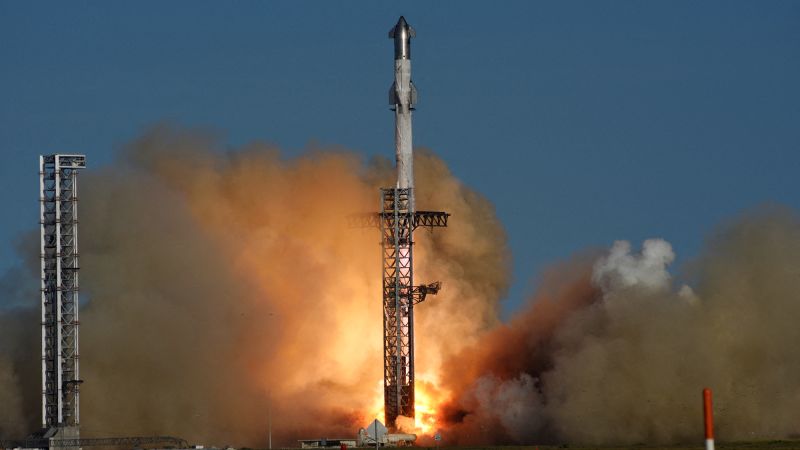SpaceX has become a spotlight in the aerospace industry, consistently pushing boundaries with its advancements, notably through the test flights of its colossal rocket system, Starship. Standing at nearly 400 feet (approximately 121 meters), Starship is touted as the most powerful rocket ever built. Its latest mission aims to extend the horizons of space exploration, in particular, paving the way for human return to the Moon by 2027 and ultimately realizing the audacious vision of CEO Elon Musk for crewed missions to Mars.
To support this ambition, NASA has committed around $3 billion to SpaceX for the development of Starship, which is intended to act as a lunar lander escorting astronauts to the Moon’s surface. The upcoming test flight is set to evaluate key upgrades to Starship, enhancing its operational capabilities—especially concerning its return from space—and performing experimental maneuvers aimed at deploying satellites from this next-generation spacecraft.
The targeted launch is scheduled for no earlier than 5 p.m. ET (4 p.m. local time) on Wednesday from SpaceX’s launchpad located at the Starbase facility in Brownsville, Texas. The launch window will remain open for an hour, and enthusiasts can follow the event live on SpaceX’s official website and on X, the social media platform that Elon Musk acquired in 2022.
The mission will commence with the Super Heavy rocket booster, which is the first stage of the system. This robust booster is equipped with 33 Raptor engines designed to provide the initial thrust needed to propel the Starship vehicle into space. Intriguingly, one of these engines will be making its second flight, being reused from a previous launch as part of SpaceX’s ongoing efforts to promote sustainability and reduce costs through reusability.
This launch marks the seventh flight of the fully integrated Starship system. As part of the mission, once the Super Heavy booster has expended most of its fuel, it will detach from the Starship, which will then ignite its engines and continue its journey into space. A highlight of the mission will be the booster attempting to land back at the launch site using SpaceX’s innovative “chopstick” mechanism, a structure affectionately nicknamed “Mechazilla” by Musk.
Previous attempts to land the booster have seen varied outcomes. SpaceX successfully executed this maneuver for the first time in October, though the subsequent attempt in November resulted in an abort due to equipment failures. This time, SpaceX is optimistic, having made hardware upgrades to improve the reliability of the booster landing mechanisms.
On a parallel track, the upper stage of the vehicle, or Starship spacecraft, will test several crucial upgrades. One significant enhancement involves increasing the volume of propellant by 25%, allowing the vehicle more sustained engine burn time, a critical factor for potential long-duration missions. During this mission, the Starship will attempt to carry out a deployment exercise involving ten satellite simulators. These simulators are designed to emulate the characteristics of future Starlink satellites and will follow a suborbital trajectory, splashing down in the Indian Ocean after about one hour.
Beyond the satellite deployment, another key objective of this test flight is to restart an engine mid-flight. This would demonstrate potential capabilities for future missions requiring multiple engine firings. SpaceX has also reconfigured the shape and positioning of Starship’s flaps to better cope with the extreme stresses and temperatures experienced during atmospheric re-entry.
Despite substantial progress, SpaceX still faces challenges before achieving its ultimate goals of returning humans to the Moon and sending crews to Mars. The company has yet to perform an orbital mission, nor has it tested the crucial in-space refueling operations that will be vital for lunar missions.
Musk previously mentioned his hopes for hundreds of satellite missions before a manned Starship flight can take place, emphasizing the importance of building and refining capabilities before venturing into crewed space travel. The vision includes deploying large numbers of Starlink satellites via Starship and ensuring the vehicle’s reusability rather than losing it to ocean splashdown.
In terms of manufacturing, SpaceX is ramping up its capacity to produce Starship vehicles, with ambitious plans to construct hundreds of ships each year from the 1 million-square-foot Starfactory located at Starbase. Given the planned extended missions to the Moon, Mars, and beyond, SpaceX’s expectations for both the Super Heavy boosters and the Starship vehicles are sky-high, indicating ambitious future exploration goals.











